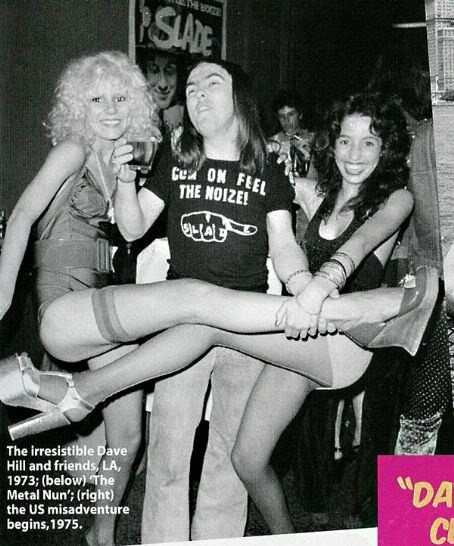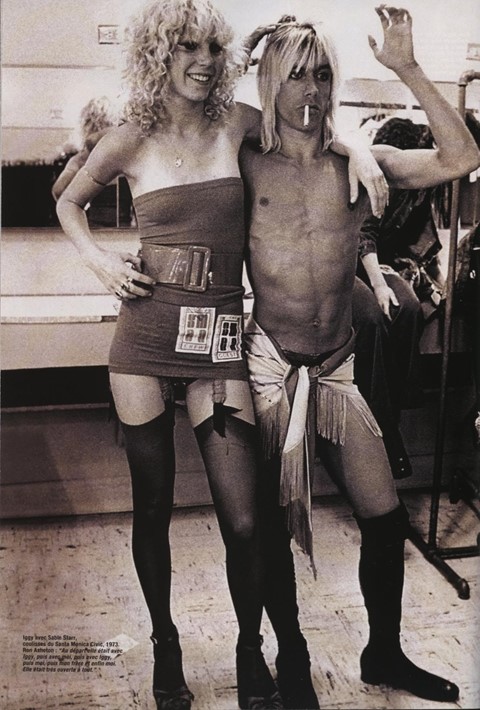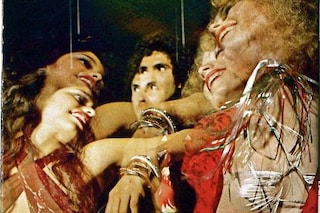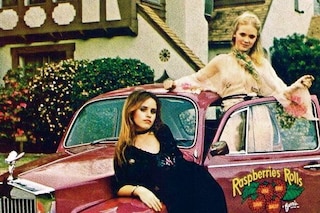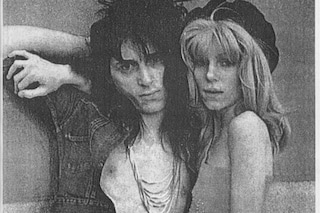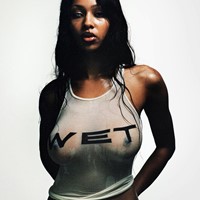As ‘The Diary of a Teenage Girl’ deconstructs teen sex in the decade, we look at the L.A. girls who had a lot more to them than just their taboo relationships
How does fashion shape adolescence? Every month, Claire Marie Healy deconstructs the ways that style culture has contributed to the idea of the teenager in new series Extreme Adolescents.
In a scene from the 1970s-set Diary of a Teenage Girl, 15 year-old Minnie and her friend gleefully jump around on a bed, blasting out The Stooges – Down on the Street – and taking turns to lick Iggy Pop’s dick. It’s a poster, of course, but that’s just one of the tamer scenes in a film that depicts a teenage girl’s coming-of-age with an exhilarating frankness. Portraying a teenagers’ discovery of her sexuality after she has sex with her mother’s 35 year-old boyfriend, Marielle Heller’s adaptation has been inexplicably branded with an 18+ rating, preventing actual teenage girls from seeing it (Bel Powley’s advice: grab a fake ID). While the UK in 2015 inexplicably draws a line at girlhood sexuality on screen, it’s San Francisco in the 1970s that provides the film’s own context – with all the temptation for nostalgic glaze that this could offer a contemporary mindset. But elsewhere in California in those years, certain teenage girls went way beyond a cut-out-and-keep relationship to the frenzied rock scene’s most desirable. They hung out on Sunset Boulevard, L.A.
There you’d find the self-dubbed foxy ladies, better known in the backstage of our cultural consciousness as baby groupies: the group of teenage high schoolers who ruled over a particular mile of Sunset Boulevard in the early 70s. The queens of the scene were close confidantes Sable Starr and Lori Lightning, who, along with other teen-aged names like Shray Mecham and Queenie Glam, slept with and dated the likes of David Bowie, Jimmy Page, Mick Jagger, Jeff Beck, Marc Bolan, Alice Cooper, Robert Plant and Iggy Pop. They were, in news that will destroy your idols, very young: Starr was 14 years old when she started hanging out on the Strip, with a 13 year old Lori Lightning (real name Mattix) joining the now established gang soon afterwards. The hangouts of choice were spots like the Rainbow Bar and Grill, Whiskey a Go Go and the E Club – later renamed Rodney Bingenheimer’s English Disco. The latter club was the preferred enclave for the era’s strange new musical breed – where, as Bowie would later enthuse to Details magazine, glam rock stars and their devotees could parade their “sounds of tomorrow” dressed in “clothes of derision.”
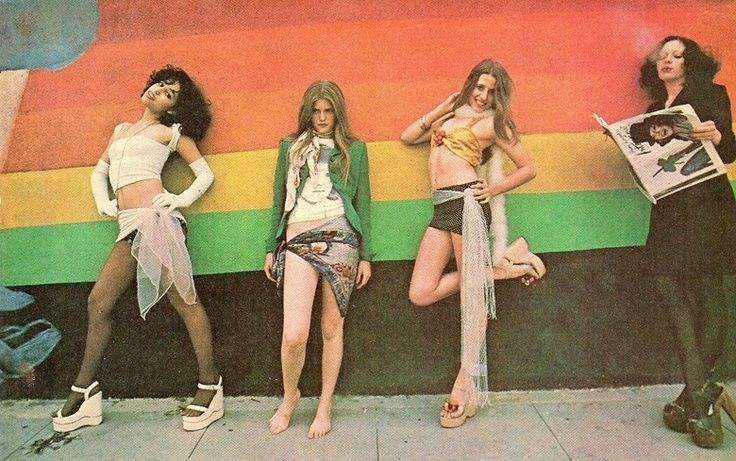
The scene was documented by the controversial, short-lived publication Star, a tome that took teenage magazine tropes to their extreme: inside, you’ll find all the usual short stories, style guides and “How to approach your crush” articles, except in this case the stories tell of romantic backstage fantasies, how to dress to catch your “superfox”, and even a step-by-step nose-job diary (in the mag’s own words, “no dream is too far-out”). Beloved by adolescent aficionados everywhere, it wasn’t long, of course, before concerned parents were knocking the publisher’s door down – five issues long, in fact. Thanks to dedicated archive digger Ryan Richardson you can gape at every single issue online – including an interview with Starr and Queenie, in the final issue, that records for posterity the startling, angsty conviction of these ultimate mean girls. Do they consider being a groupie a career? No. Have they ever got into a fight with another groupie? Yes, if throwing a gin gimlet in a girl’s face counts. On their predecessor groupies, like Pamela des Barres and her GTOs: “They’re too old. As soon as we walk in, they might as well jump out the window.”
But even more striking than the magazine’s laugh out loud, irreverent take on the scene – in its own words, “relief from all that moral-spiritual-ethical-medical-advice” – are the clothes. If Sable Starr and Lori Lightning were band-aides to rock’s greatest musos, their style has stuck in the minds of fashion visionaries. As Tim Blanks reveals in Spring/Summer’s Another Man, he’s had plenty of conversations with Anna Sui as to Star’s impact on them as teenagers. Today, fashion’s greatest girl gangs are just one A.A.A short of head-to-toe groupie status. At Saint Laurent, Hedi Slimane has sexed up brand codes with a younger, messier muse: fishnet tights, towering platforms and breast-baring mini dresses clearly channel the give-a-fuck, freewheeling attitude of the original groupie gangs. Stuart Vevers has also shaken up an established brand with the girl cliques of a bygone era: Coach’s SS15 heralded the label’s new rebellion, with girls looking like glammed up groupies hitching a ride to the next show. And just last month, Miu Miu’s resort show and party transported a little bit of the English Disco to Paris: the plush seating areas and mirrored surfaces were straight out of the Strip’s neon-lit VIP zones.
While the retrospective gaze wants to box up groupie style into neat parts – because hey, weren’t those towering platforms with a hole in the heel just fantastic? – the reality was a little more off-kilter. The baby groupies’ style was as messy and unabashed as their love lives: faded kimonos over halter bikini-tops; netted pillbox hats with lame hotpants; liberated nipples with a velvet scarf, as topped with a wide brimmed hat. Style guides in Star magazine were more about breaking rules than keeping them, with tongue-in-cheek guides to thrifting and how to mix vintage clothes with new bearing a greater resemblance to Cheap Date than Teen Vogue. Queenie placed the look in an interview as somewhere “in-between the New York Street and the English feminine look […] the 40s and 50s have a great deal to do with how we dress.” Star’s emphasis lay with outstanding personal style, not identikit fashions. Girls who were merely attractive and popular were sent to the sidelines in favour of girls who, though “average-looking”, possessed amazing personal style. Cos in the end, that’s the girl who really “knows the Foxy Ways.”
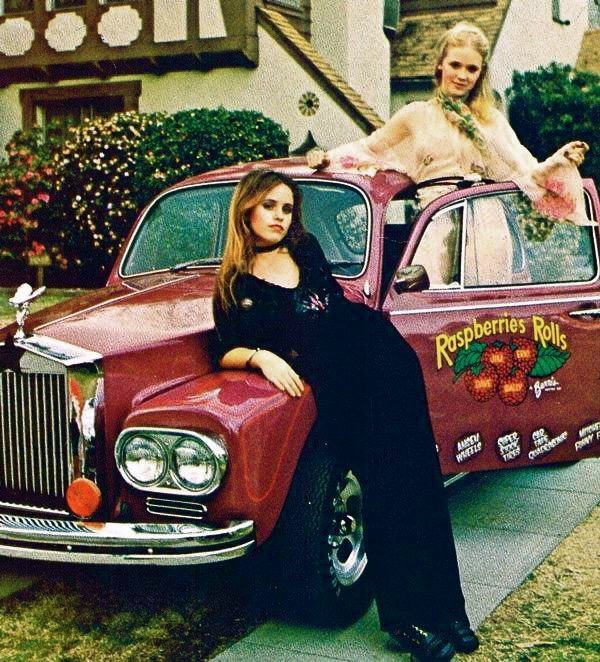
Star was, needless to say, a heavily glamorised chronicle of the teenage groupie girls who frequented its pages – wilfully ignoring, and worse enabling, a culture that still allows powerful men to target young girls. But like any history that plays out in the margins – in the backstage of rock music’s mythmaking – there are conflicting accounts as to how well or badly off the girls were. Lori Lightning, who claims to have fallen in love with Jimmy Page aged 14, has no regrets. As she tells fellow ex-groupie Pamela des Barres in the latter’s book, “It was such a different time – there was no AIDS – and you were free to experiment.” Nobody can ask Starr, now – the ballsy queen of the babies eventually got clean and had kids, but died aged 51 in 2009.
Even now, there’s a kind of power to be found somewhere amid the gushing interviews and romanticised editorials of Star. Addressing its teen readers without patronising them, Star cut straight to the heart of the sexual desires of girlhood like no other magazine would dare. Sexually forward in their dress and their attitude, the groupies adopted acceptable male traits to go out and get what they wanted. By channelling the stars of the Sunset Strip, the magazine empowered readers to approach humdrum high school life with the same fearlessness. Though not exactly feminist in its boy-getting tips – “I’d scratch any girl’s eyes out for a guy I want” – the message that boys shouldn't have all the fun is loud and clear. As one reader writes in of the frustrating sexual double standard, “Guys can take their going steady rings and rules and shove it up their noses!”
“Addressing its teen readers without patronising them, Star cut straight to the heart of the sexual desires of girlhood like no other magazine would dare”
“Do you like distortion? I do.” That’s Iggy Pop, intro-ing his BBC Radio 6 show last week in his ninth life as a primetime slot DJ. He slept with Starr when she was just 13, and, horribly, later wrote a song about it. His words are worryingly relevant to our own fetish for history’s visuals without their story – style divorced from context, worth a fleeting Instagram like and then on to the next. Our preference for rose-tinted glasses – especially de rigour heart-shaped ones, fit for a foxy lady – is hugely problematic. But flicking through Star magazine, you begin to see its role as a link between the innocent teenyboppers of the 60s, and the rise of badass female frontwomen in the 70s and beyond. Joan Jett was first spotted on the Boulevard, outside the Rainbow Grill. Later on, Grace Jones and Courtney Love are just two examples of powerful artists who were sexually upfront in their fashion, and did things entirely on their own terms.
There are some great photos of Sable Starr and Debbie Harry, floating around the internet. Their legs are hitched up high, like so many other groupie snaps. Except this time the sweaty, ‘luded up men are missing. Here she goofily grins in a sweater, pulling “sexy” poses for the camera like any girl and her friend would. How I’d love to know what they talked about.
